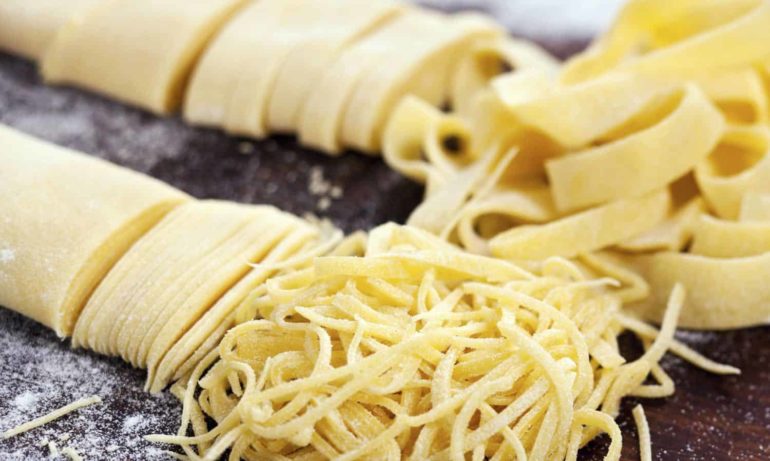The type of food we choose to eat determines a large part of our personal carbon footprint. With a long shelf life, pasta helps reduce the amount of food that is thrown away by serving as a base for vegetables and other leftover foods that might otherwise go to waste. When combined with pulses, a highly nutritious and climate-friendly crop, these two common ingredient groups can contribute largely to a sustainable diet.
According to the 2015 Passion for Pasta Food Waste & Sustainability Consumer Omnibus Survey, 78 percent of respondents always had pasta in their home, while 74 percent of respondents never have to throw pasta away. Dry pasta can store for two years and doesn’t have to be refrigerated, cutting down on household energy use and associated greenhouse gas emissions. In fact, pasta has a lower carbon footprint and lower water footprint than both red meat and poultry.
Often cooked in family-sized quantities, pasta and pulses are a symbol of the social importance of food and conviviality. Where pasta has been adopted around the world, it has taken on the unique flavors of the region and becomes a canvas for serving traditional and local foods.
Traditional semolina pasta is a staple of traditional Italian cuisine. Other nutritious grains such as quinoa and brown rice, which are also gluten free, are increasingly popular in North America and Europe. Asian noodles are often made with rice, yam, or mung bean, as well.
One serving of pasta contains plant-based protein and is an excellent source of folate, a good source of iron and provides a variety of B vitamins. Whole-grain pasta is an excellent source of fiber, and both traditional and whole-grain pasta can be fortified with additional protein and Omega 3s to improve their nutritional profiles even further. A common add-in to pasta dishes, pulses—such as common beans, chickpeas, fava bean, dried peas, and lentils—are highly nutritious, rich in protein and essential micronutrients, and have a tiny carbon footprint.
Pulses are able to directly draw nitrogen from the atmosphere, converting it into nutrients vital for plant growth, meaning they don’t require nitrogen fertilizers which use fossil fuel. Growing pulses makes fertile soil, which in turn reduces the need for fertilizer in other crops. Additionally, pulses are a highly water efficient source of protein.
Dietary guidelines around the world are beginning to include sustainability considerations when making recommendations for nutritional health. Sweden has taken the lead on sustainability research within the context of dietary choices and has formed the Nordic Nutrition Recommendations, which include environmental impact assessments. In Germany, a consumer guide for dietary choices includes a sustainable shopping basket. In the United States, the 2015 Dietary Guidelines Advisory Committee (DGAC) was the first to include a review of sustainable diets in their scientific report, which informs the Dietary Guidelines for Americans.
The U.S. Department of Agriculture (USDA) recommends that a quarter of the plate be devoted to grains such as pasta at every meal and that half of those should be whole grains.
When making pasta dishes at home, the used cooking water can be cooled and used to water plants. The starchy water gives plants nutrients to help them grow. (Be sure to not use water that has been salted or seasoned, though.)
Try it out with one of Food Tank’s favorite pasta recipes:
Credit: Chef Lorenzo Boni
Warm Rigatoni with Asparagus and Bottarga Salad
Ingredients
- 1 box rigatoni
- 5 tablespoons extra virgin olive oil
- 1 lobe bottarga, sliced thin
- 1 bunch asparagus
- Salt and black pepper to taste
Directions
- Bring a large pot of water to a boil. Cook the pasta according to the package directions, add salt.
- In a bowl, mix bottarga and asparagus, season with black pepper and add 2 tablespoons of extra virgin olive oil.
- Drain pasta and mix with the remaining 3 tablespoons of extra virgin olive oil. Top with asparagus and bottarga salad.













